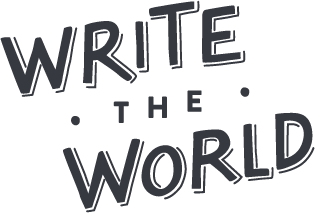An important feature of science writing is the ability to communicate facts in a creative and engaging way, making the information accessible to all readers. "It can help to imagine that you’re writing for your friend who wouldn’t touch AP Chemistry with a ten-foot pole," says editor Shannon Palus, Guest Judge for our Science Writing Competition. "Try to make it engaging for someone like them, and you’ll have a good story."
Keen to learn more about Shannon’s work and her advice for writing a competition-winning piece? Read on!

Many of our writers may be unfamiliar with the genre of science writing. Can you tell us about how you discovered it, and your path into working as a science writer?
When I got to college, I knew I really loved writing and science. So I majored in physics, and joined the student newspaper. Luckily, the McGill Daily had a great science and tech section, and even offered editors small stipends. My junior year, I took a semester off to intern at Discover magazine, and then I freelanced a bit during the rest of my degree, joined the National Association of Science writers (they have student memberships starting at $20) and even went to one of their conferences. I took five years to graduate, and leaving undergrad with work experience and connections was invaluable.
The work I do now looks pretty different from the work I did at the start of my career—I even spent a while writing product reviews!—so the advice I have for anyone interested in both science and writing is to think expansively about where science shows up in the world, and to think expansively about what “science writing” can mean. You might end up somewhere really unique with your work.
Science writing has to break down technical concepts while still being engaging enough that the reader wants to keep reading. When writing a science article, how do you balance the complicated stuff with the compelling storytelling?
I always think a lot about who my audience is. “What does the reader need?” is a constant refrain in my head, whether I’m writing or editing. I’ve written for very technical publications, where the whole point is to provide an update on an area of research to experts—so with those pieces, I would really get into the weeds! Slate, where I work now, is a general interest magazine, so our science and medical stories typically focus on two things: 1) telling a compelling story about people that involves research in some way or another, and 2) giving the reader information that’s relevant to their life, whether it’s a story about a disease or climate change.
To find balance, I advise reading your writing aloud to yourself, or to a friend. That can help you spot places where the story is dragging, or where there isn’t enough information for a reader to follow along without getting confused.
What is your reporting process for science articles? How do you know what the new science is? How do you find your interview sources?
Google Scholar is one of my first stops when I’m reporting. It’s filled with papers, and you can search by time period, so I can find the latest research on a given topic, and the earliest. I’ll look at the authors of the papers to find interview subjects (often there is at least one email on a paper). I also search for press releases, which are sent out by universities to announce the results of studies. Those press releases can be useful in and of themselves, and will include contact information for a press officer, who can connect me to scientists. Sometimes I’ll cold email press officers (also listed under something like “media contacts”) at universities that I know do good work, and ask if they can connect me with a relevant expert to interview.
For this competition, writers will be crafting science explainers. Do you have any suggestions for what makes a good subject for an explainer?
Anything that you are curious about could be a good explainer subject! When I’m generating story ideas, I’ll write things down in the Notes app on my phone, or even a draft of an email (that I will never send). Somehow, a draft of an email feels informal and low stakes, and that makes brainstorming easier.
Read the news—what do you want more information on? Look around your life—what is mysterious? Then, pick an idea to move forward with based on what you think other people (aka your readers) need to know more about, too.
What are you looking for in a winning entry? Any other advice for the writers, especially those who are new to science writing?
I prize clear, engaging writing that is full of interesting little details that I won’t be able to get out of my head, and that makes me see the world a little differently than I did before. My favorite science writing isn’t different from any other kind of good writing. It can help to imagine that you’re writing for your friend who wouldn’t touch AP Chemistry with a ten-foot pole—try to make it engaging for someone like them, and you’ll have a good story.
About the Guest Judge:
Shannon Palus is a features editor at Slate. Some of her favorite things she has edited recently include a feature on the new science of recovery from concussions (and why many doctors give the wrong advice), and a special package of stories about breasts—including a couple science stories—titled “Boobs Week.” She previously worked for the New York Times’ Wirecutter, where she wrote about the science behind personal care products. Her work has also appeared in Scientific American, Popular Science, the Atlantic, and more. She attended McGill University in Montreal, and currently lives in Brooklyn with her husband and their dog, Ada, named after the mathematician Ada Lovelace.





